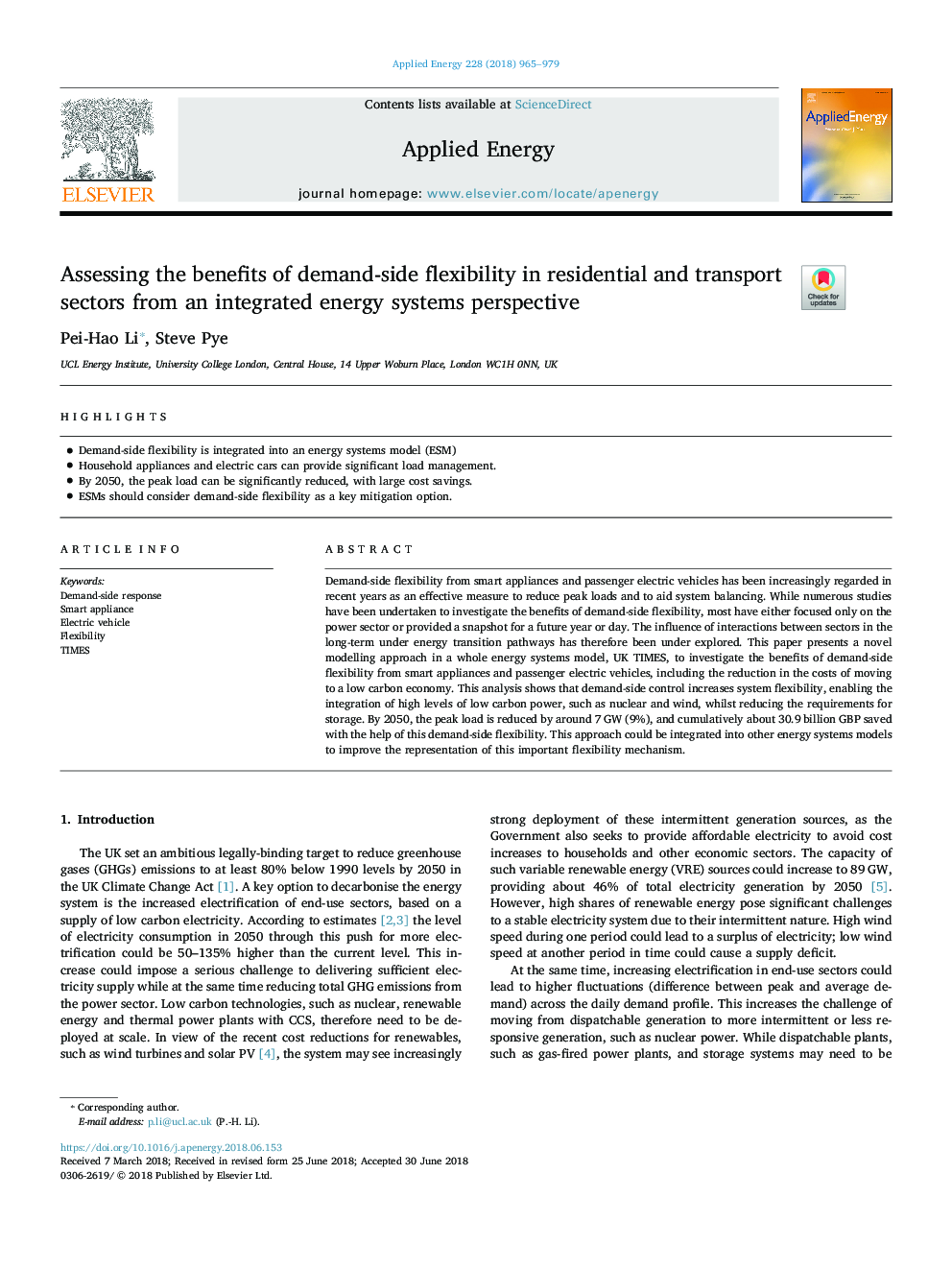| Article ID | Journal | Published Year | Pages | File Type |
|---|---|---|---|---|
| 6679785 | Applied Energy | 2018 | 15 Pages |
Abstract
Demand-side flexibility from smart appliances and passenger electric vehicles has been increasingly regarded in recent years as an effective measure to reduce peak loads and to aid system balancing. While numerous studies have been undertaken to investigate the benefits of demand-side flexibility, most have either focused only on the power sector or provided a snapshot for a future year or day. The influence of interactions between sectors in the long-term under energy transition pathways has therefore been under explored. This paper presents a novel modelling approach in a whole energy systems model, UK TIMES, to investigate the benefits of demand-side flexibility from smart appliances and passenger electric vehicles, including the reduction in the costs of moving to a low carbon economy. This analysis shows that demand-side control increases system flexibility, enabling the integration of high levels of low carbon power, such as nuclear and wind, whilst reducing the requirements for storage. By 2050, the peak load is reduced by around 7â¯GW (9%), and cumulatively about 30.9â¯billion GBP saved with the help of this demand-side flexibility. This approach could be integrated into other energy systems models to improve the representation of this important flexibility mechanism.
Related Topics
Physical Sciences and Engineering
Energy
Energy Engineering and Power Technology
Authors
Pei-Hao Li, Steve Pye,
